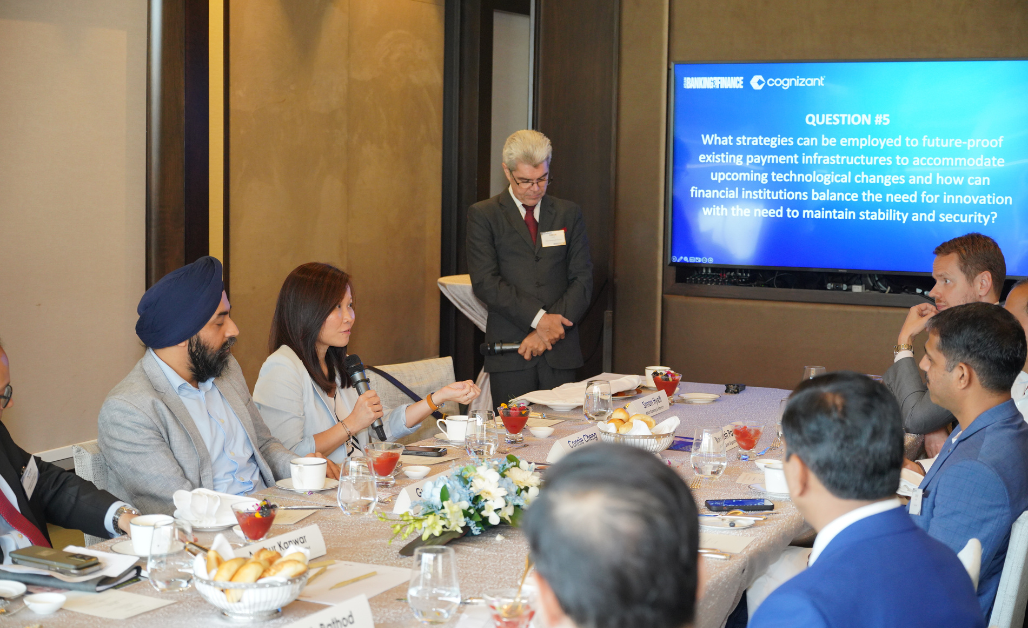
The Future of Payments: Ensuring Stability, Embracing Innovation
As technology continues to evolve, financial institutions must persist with refining seamless and secure payment experiences for consumers.
A recent roundtable event, "The Future of Payments: 2025 and Beyond," brought together senior payment regional executives to discuss the evolving payment landscape and innovation in financial institutions. The event, hosted by Asian Banking & Finance, in partnership with Cognizant, took place on 16 July 2024, at The Fullerton Bay Hotel, Singapore.

In today’s complex financial environment, institutions are challenged to navigate economic volatility, trade tensions and geopolitical uncertainty whilst navigating stringent data privacy regulations.
A promising project in cross-border payments simplification is Project Nexus (an initiative led by the Bank for International Settlements) - though its ultimate success is yet to be seen. As regulatory landscapes continually shift, staying ahead with innovative compliance solutions is crucial to not only remain compliant but also maintain a competitive edge in the financial sector.
Standardisation, particularly in the front end, is crucial to achieving a unified view of user payments, despite the significant internal challenges that come with it.
“What we need for cross border payment is a willingness for all the participants to participate and work towards the customer end goal where they are looking at real-time and faster payment, with a centralised liquidity view,” said Balbir Rathod, Consulting Director & Payments Lead, ASEAN, at Cognizant.
Transforming payment journeys
Transforming the payment journey should include addressing the blurring lines between retail and corporate payments. Transparency in cross-border payments is a significant challenge for businesses, as they often struggle with transaction visibility, making it difficult to track payment statuses and associated fees.
Today’s consumers expect speed, flexibility, and personalised experiences. They’ve grown accustomed to platforms like Netflix that greet them by name and can predict their preferences with pinpoint accuracy. By contrast, most collections’ operations still rely on decades-old processes. Banks and financial institutions often struggle with even simple predictions for debt recovery or even to reliably keep track of customers’ preferred channels and contact times.
By leveraging automation and data in judicious combination, debt-collection organisations can maintain healthy financial portfolios in this changing, debt-laden world of 2024 and beyond, whilst never compromising on customer care and experience. Just as corporate clients desire clear, trackable cross-border payments, consumers benefit from knowing the complete journey of their payment transactions.
It is worth noting that whilst GenAI offers significant potential in pattern recognition, fraud prevention, and chatbots; it is still in its early stages and requires time to stabilise and prove its upsides for the industry.
The key to differentiation
As the market welcomes more players, financial institutions must prioritise stability and resiliency for customers. By meeting these fundamental requirements, banks can explore new revenue streams, such as embedded finance, to support other platforms in distributing financial products and innovative solutions for cash flow forecasting and management targetted at corporate treasuries.
With new technologies emerging at a rapid pace, futureproofing involves balancing innovation and security. This starts with addressing customer needs through easy-to-use features as well as personalisation tailored to customers’ spending habits and financial goals.
Emphasising the importance of green financing for a sustainable future and addressing environmental concerns remains crucial for banks.
To drive innovation and enhance the customer experience through a payment hub, it is essential to balance various pressures for (de)centralisation and future growth strategies. Innovation is both a core value and a disciplined process, and payment hubs must avoid stifling innovation by becoming overly centralised or too rigid.
"It is very much about making sure that there's a methodology around innovation to meet the business imperatives as well," said Constance Ho, Head of Consulting, ASEAN & Greater China at Cognizant.
Maintaining a balance between central governance and decentralisation can ensure that innovation thrives whilst adhering to organisational standards.






















 Advertise
Advertise






